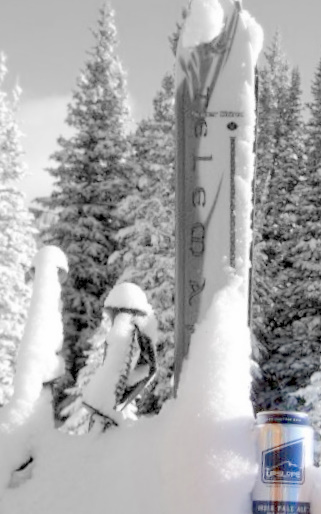Ingredient One: Snowmelt
https://upslopebrewing.com/wp-content/themes/corpus/images/empty/thumbnail.jpg 150 150 upslopebrewing upslopebrewing https://secure.gravatar.com/avatar/f549539a04562a151e1b7b4df20b2009?s=96&d=mm&r=g Upslope Brewing’s Head Brewer, Dany Pages, is a chemist by education. He spent a few years out of college working in the labs at Nestle in Buenos Aires. It didn’t take long to realize that the lab environment was not for him. He packed up and headed for the wilds of Ushuaia, Argentina to work construction, guide trips climbing glaciers, and play around with brewing beer in a former chicken coup that hung off the back of his rental house. Little did he realize that it was a hobby that would eventually point him in the direction of Boulder, Colorado, to be with his soon-to-be fiancé, and an integral part of a startup microbrewery.
Upslope Brewing’s Head Brewer, Dany Pages, is a chemist by education. He spent a few years out of college working in the labs at Nestle in Buenos Aires. It didn’t take long to realize that the lab environment was not for him. He packed up and headed for the wilds of Ushuaia, Argentina to work construction, guide trips climbing glaciers, and play around with brewing beer in a former chicken coup that hung off the back of his rental house. Little did he realize that it was a hobby that would eventually point him in the direction of Boulder, Colorado, to be with his soon-to-be fiancé, and an integral part of a startup microbrewery.
On the list of thousands of tasks to undertake, one was to understand what the water in Boulder was really like . . . chemically. “Get me a report from the water department that tells me the contents of Boulder’s water supplyâ€. Upon analyzing the report, understanding the sources for the water, and conducting his own analyses, Dany said, “There isn’t anything that we need to do to this water. This is great water!!†His only insistence was to install an industrial filter. This would level out the seasonal inconsistencies of Boulder’s pulling from different reservoirs over the course of a year, as well as the effects of runoff and storage.
Where there is water, there is life. In 1888, J.P. Maxwell and George Oliver began the overwhelming task of digging a ditch in order to bring water from the Silver Lake Watershed, a stone’s throw from the Continental Divide, to Boulder. Forty percent of Boulder’s water supply still comes down the same route. Boulderites know of these names associated with bringing us our precious water: Barker, Betasso, Middle Boulder, Lakewood, Moffat. In this high mountain desert, we could not exist without that fluffy white stuff that piles up on this side of the Divide.
Upon working with our stellar branding folks, Anthem Branding, on a label for our beers, we came to the list of ingredients. I said, “What do you think about using ‘snowmelt’ as the first ingredient?†They dug it and then it was a matter of getting the approval from the TTB, widely known to the non-brewing sector as the Alcohol, Tobacco and Trade Bureau. You really never know what those folks are going to say. With their approval, we moved forward on the final design and off to the can supplier for tooling and pin-pointing the right hues to define our brand.
The state of Colorado brews more beer than any other of these United States. While this has a lot to do with the large breweries in Golden and Loveland, it also has something to do with the 114 microbreweries and brewpubs that have grown up since the Colorado microbrewing revolution started with Boulder Beer in 1979. Why so many breweries in a relatively underpopulated state? I would argue “snowmeltâ€.



